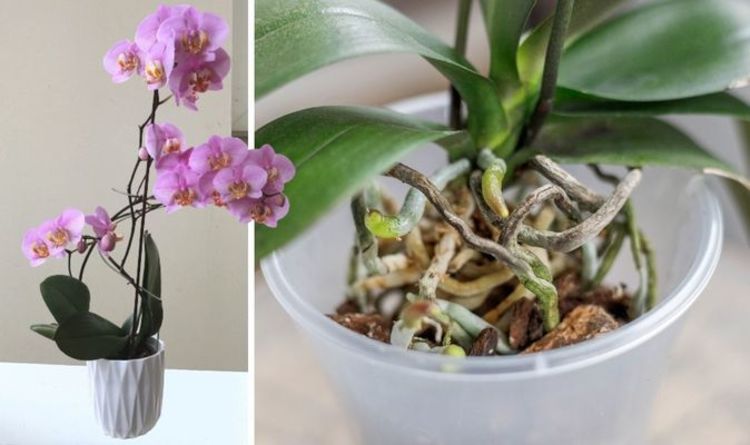

Orchids are one of the most common houseplants in the UK, with moth orchids the most popular variety. They are often low maintenance but need extra care during the colder months when there is less daylight and the heating is on. The winter months also means owners can stop watering their orchid as much, but how can you tell if the indoor plant is thirsty?
There are many ways in which houseplant owners can tell if their plant needs a drink.
With an orchid, roots that are green means the plant is getting the right amount of water.
If the roots are brown and potentially soggy, it could mean you are overwatering it, one of the biggest issues when it comes to owning houseplants.
Orchid roots which are grey or white mean the plant is not getting enough water.
READ MORE: Mrs Hinch fans share £1 hack for removing oil stains from clothes
“People for this method believe it simplifies the watering routine, making it easier for beginners and prevents overwatering.
“But plants, much like humans, have different watering needs.”
This depends on external factors such as where in the home they are placed and how hot the room tends to be.
The expert added: “We always recommend using your senses and instinct rather than a method or routine.
“We also suggest that you use room temperature water when watering most plants as water too cold can shock the roots, so this too is a risk with using ice cubes.”
Orchids may also prefer being watered with filtered water as they grow best in PH conditions of 5.5 to 6.5.
Another plant which is sensitive to tap water is the Peace Lily, a gorgeous houseplant known for its white flowers.
Natalie explained: “Peace lilies are considered easier than some other plants to look after in the winter when there are fewer sunlight hours, despite being a tropical plant, as they grow well in moderate to low lighting conditions.
“They will flower in spring if a minimum temperature of around 15 degrees celsius is maintained in the home throughout winter and their soil remains moist in a pot with good drainage.”
Natalie recommended misting the plant regularly because it likes a humid environment.
She added: “Peace lilies don’t like being overwatered, so don’t water on a schedule as it is likely they will need less in the winter than the summer when the external conditions are warmer.
“Overwatering can lead to root rot which suffocates the plant.
“Where possible, use filtered water and avoid tap water which can contain fluoride, which peace lilies are sensitive to.”
The houseplant also likes to be watered with room temperature water because like with orchids, water too cold can shock the plant.





More Stories
Urgent broadband alert! If your Wi-Fi router is on this list you must update it now
Amazon offers Kindle owners one million books for 99p and that’s not all
‘Large magnitude risk’: Nut eaten by millions may be ‘major’ contributor to mouth cancer